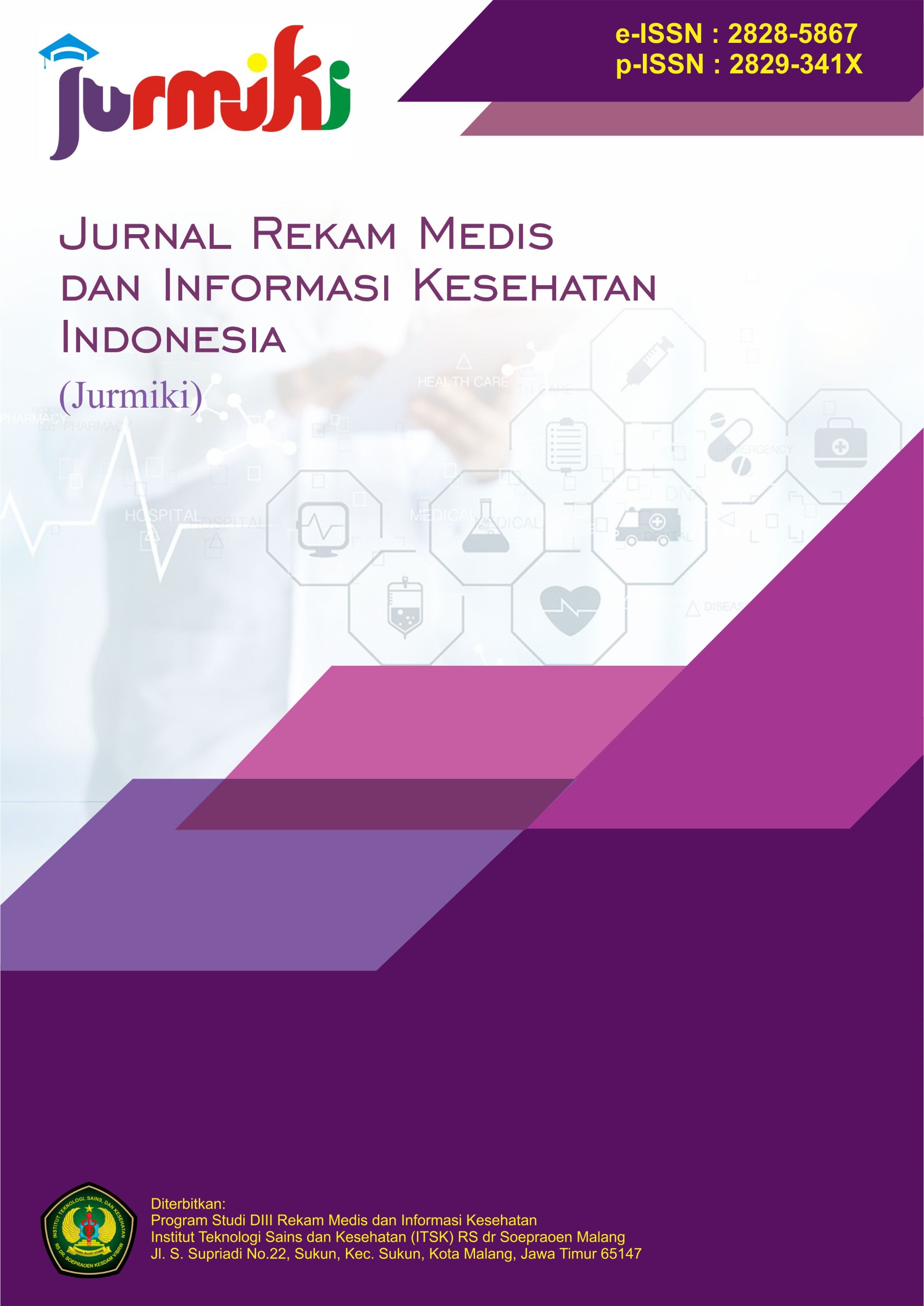Implementation of Electronic Medical Records at Balong Community Health Center, Ponorogo Regency
DOI:
https://doi.org/10.62951/jurmiki.v4i2.99Keywords:
Electronic Medical Records, Health Center, Implementation, Information SystemAbstract
Electronic Medical Records (EMR) are a form of digitalization in healthcare services aimed at improving efficiency, accuracy, and integration of patient data. This study aims to identify the implementation of EMR based on ideal implementation indicators at Puskesmas Balong, Ponorogo Regency. Data were obtained through observation and interviews with registration officers, medical staff, and the head of the health center using the EPUS Klaster application system. The results showed that EMR implementation had a positive impact by accelerating services, facilitating access to patient data, and improving coordination between units. However, obstacles such as network disruptions, lack of training, and dependency on third-party vendors remain significant. Managerial support was also found to be suboptimal in providing necessary facilities and infrastructure. It is necessary to strengthen human resource training, improve IT infrastructure, and conduct regular evaluations to ensure that EMR implementation runs optimally and sustainably.
References
Dinas Kesehatan Kabupaten Ponorogo. (2024). Laporan monitoring implementasi RME di Puskesmas Balong. Ponorogo: Dinas Kesehatan Kabupaten Ponorogo.
Faida, R. (2021). Tantangan penerapan rekam medis elektronik di puskesmas. Jurnal Kesehatan Masyarakat, 9(2), 112–120.
Faida, R., & Ali, M. (2021). Evaluasi implementasi sistem RME di fasilitas pelayanan kesehatan tingkat pertama. Jurnal Administrasi Kesehatan Indonesia, 3(1), 45–52.
Kementerian Kesehatan Republik Indonesia. (2022). Peraturan Menteri Kesehatan Republik Indonesia Nomor 24 Tahun 2022 tentang rekam medis. Jakarta: Kementerian Kesehatan Republik Indonesia.
Miles, M. B., & Huberman, A. M. (2014). Qualitative data analysis: A methods sourcebook. Jakarta: UI Press.
Rahmawati, D., Lestari, M., & Yuliani, T. (2023). Efektivitas pelatihan dalam meningkatkan kualitas input data RME. Jurnal Kesehatan Digital, 2(3), 55–64.
Santoso, R., & Ibnu, H. (2023). Digitalisasi sistem pelayanan kesehatan berbasis RME. Jurnal Manajemen Kesehatan Elektronik, 5(2), 91–99.
Setiawan, A., & Sevtiyani, R. (2023). Indikator keberhasilan sistem informasi kesehatan di puskesmas. Jurnal Teknologi dan Informasi Kesehatan, 4(1), 22–31.
Susanto, H., Lestari, S., & Nugroho, B. (2024). Studi kasus: Vendor pihak ketiga dalam sistem RME. Jurnal Ilmiah Teknologi Kesehatan, 7(1), 33–42.
Widodo, S., Ningsih, F., & Rahayu, D. (2023). Analisis infrastruktur TI dalam implementasi rekam medis elektronik. Jurnal Sistem Informasi Kesehatan, 6(1), 15–24.
World Health Organization. (2018). Classification of digital health interventions. Geneva: World Health Organization.
Downloads
Published
Issue
Section
License
Copyright (c) 2025 Jurnal Rekam Medis dan Informasi Kesehatan Indonesia

This work is licensed under a Creative Commons Attribution-ShareAlike 4.0 International License.








